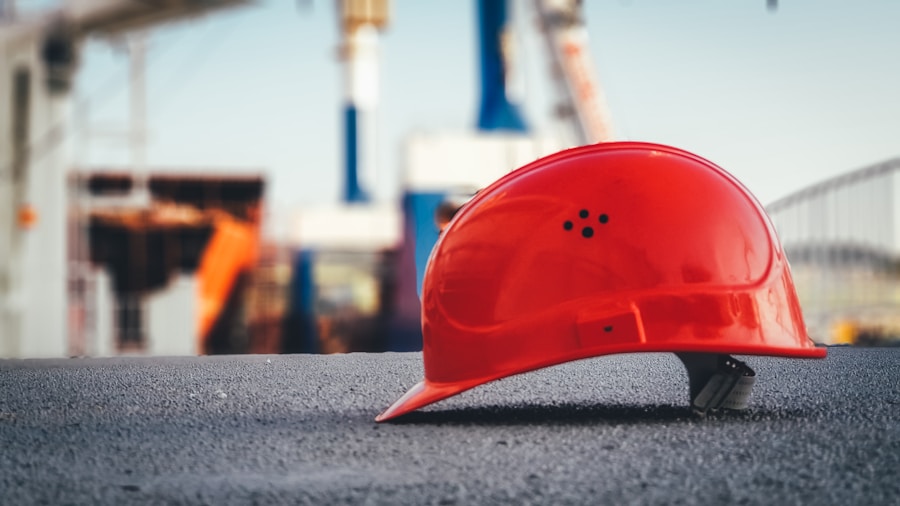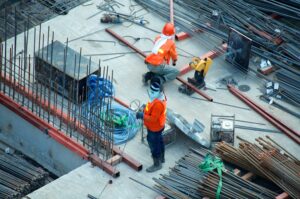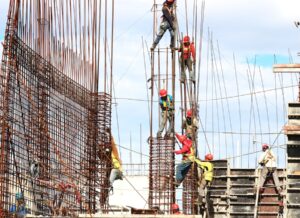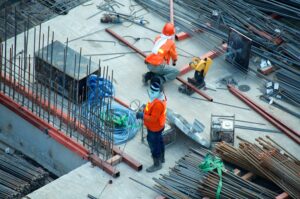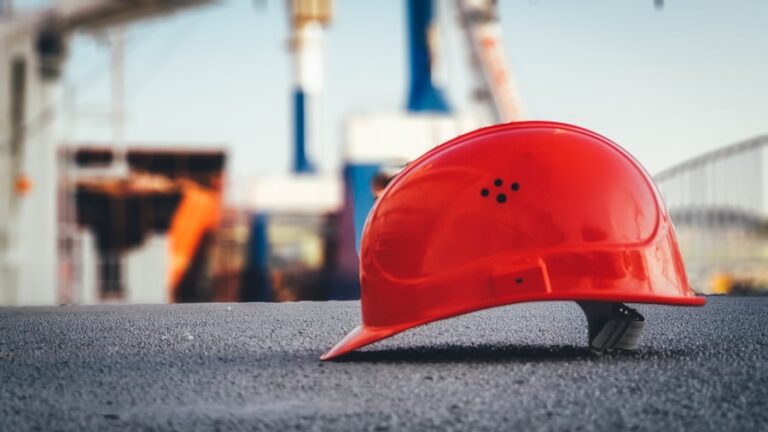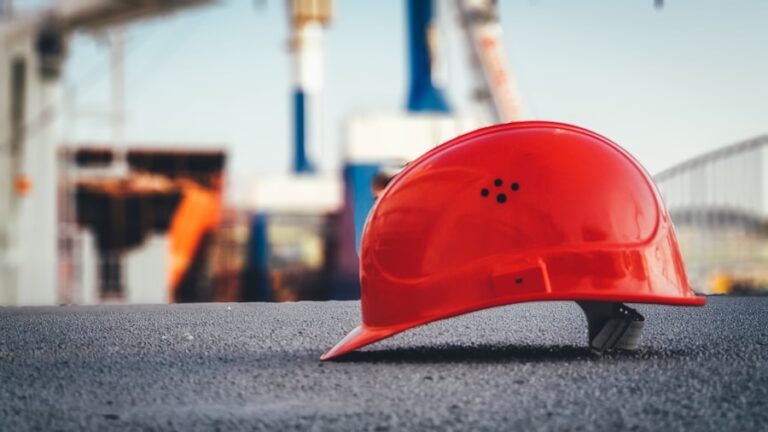When it comes to building a new structure, the location and land are crucial factors to consider. The location of the building can greatly impact its accessibility, visibility, and overall success. It is important to carefully consider the surrounding area and the potential impact of the new building on the community. Additionally, the land itself must be suitable for construction, with proper soil conditions and adequate space for the desired structure.
In terms of location, it is important to consider factors such as proximity to major roads, public transportation, and other amenities. A well-located building can attract more visitors and customers, while also providing convenience for employees and residents. The surrounding area should also be considered, as it can impact the overall aesthetic and functionality of the building. For example, a building located in a historic district may need to adhere to certain architectural guidelines, while a building in a commercial area may need to consider parking and traffic flow.
When it comes to the land itself, it is important to consider factors such as soil conditions, topography, and environmental impact. The land must be suitable for construction, with proper drainage and stability. Additionally, any environmental concerns must be addressed, such as potential impact on wildlife or natural resources. Overall, the location and land are crucial factors to consider when planning a new building, as they can greatly impact its success and functionality.
Design and Layout
The design and layout of a new building are crucial aspects of the construction process. The design of the building must be carefully considered to ensure that it meets the needs of its intended use, while also being aesthetically pleasing and functional. The layout of the building must also be carefully planned to ensure that it maximizes space and efficiency.
When it comes to design, it is important to consider factors such as the intended use of the building, the surrounding area, and any architectural guidelines or restrictions. The design of the building should reflect its purpose, whether it is a commercial space, residential building, or public facility. Additionally, the design should also consider factors such as energy efficiency, sustainability, and accessibility.
In terms of layout, it is important to carefully plan the interior and exterior spaces of the building to ensure that they are functional and efficient. The layout should maximize space and flow, while also considering factors such as natural light, ventilation, and privacy. Additionally, the layout should also consider factors such as accessibility for people with disabilities and safety regulations. Overall, the design and layout of a new building are crucial aspects of the construction process that must be carefully planned and executed to ensure a successful and functional end result.
Permits and Regulations
Before beginning construction on a new building, it is crucial to obtain the necessary permits and adhere to all relevant regulations. Building permits are required for most construction projects and are necessary to ensure that the building meets all safety and zoning requirements. Additionally, there may be other permits required depending on the location and intended use of the building.
In addition to permits, there are also various regulations that must be adhered to throughout the construction process. These regulations may include zoning laws, building codes, environmental regulations, and safety standards. It is important to carefully research and understand all relevant regulations before beginning construction to avoid any delays or legal issues.
Obtaining permits and adhering to regulations can be a complex process that requires careful planning and attention to detail. It is important to work with experienced professionals who can help navigate the permit process and ensure that all regulations are met. By obtaining the necessary permits and adhering to all relevant regulations, you can ensure that your new building is constructed legally and safely.
Materials and Finishes
The materials and finishes used in a new building are crucial aspects of its construction that can greatly impact its durability, aesthetics, and functionality. It is important to carefully select materials that are suitable for the intended use of the building, while also considering factors such as cost, sustainability, and maintenance.
When it comes to materials, it is important to consider factors such as strength, durability, and resistance to environmental factors. For example, a commercial building may require materials that are able to withstand heavy foot traffic and frequent use, while a residential building may require materials that are comfortable and aesthetically pleasing. Additionally, it is important to consider factors such as energy efficiency and sustainability when selecting materials.
In terms of finishes, it is important to carefully select options that are both aesthetically pleasing and functional. Finishes can greatly impact the overall appearance of a building, as well as its maintenance requirements. It is important to select finishes that are durable and easy to clean, while also considering factors such as cost and environmental impact.
Overall, the materials and finishes used in a new building are crucial aspects of its construction that must be carefully considered. By selecting materials and finishes that are suitable for the intended use of the building, while also considering factors such as cost and sustainability, you can ensure that your new building is both functional and aesthetically pleasing.
Utilities and Infrastructure
The utilities and infrastructure of a new building are crucial aspects of its construction that must be carefully planned and executed. Utilities such as water, electricity, heating, and cooling are essential for the functionality of a building, while infrastructure such as roads, parking, and landscaping are important for accessibility and aesthetics.
When it comes to utilities, it is important to carefully plan for their installation and maintenance. The location of utilities within the building must be carefully considered to ensure that they are easily accessible for maintenance and repairs. Additionally, it is important to consider factors such as energy efficiency and sustainability when planning for utilities.
In terms of infrastructure, it is important to carefully plan for roads, parking, landscaping, and other exterior features that are essential for accessibility and aesthetics. The layout of the site must be carefully planned to ensure that it maximizes space and flow while also considering factors such as safety regulations and environmental impact.
Overall, utilities and infrastructure are crucial aspects of a new building’s construction that must be carefully planned and executed. By carefully planning for utilities such as water, electricity, heating, and cooling while also considering factors such as energy efficiency and sustainability, you can ensure that your new building is functional and efficient.
Security and Safety
Security and safety are crucial aspects of a new building’s construction that must be carefully planned for to ensure the well-being of its occupants. It is important to consider factors such as fire safety, emergency exits, security systems, and accessibility for people with disabilities when planning for security and safety.
When it comes to security, it is important to carefully plan for systems such as alarms, surveillance cameras, access control systems, and security personnel. These systems are essential for protecting the building from unauthorized access or criminal activity. Additionally, it is important to consider factors such as lighting and landscaping when planning for security.
In terms of safety, it is important to carefully plan for features such as fire exits, emergency lighting, first aid stations, and accessibility for people with disabilities. These features are essential for ensuring the safety of the building’s occupants in case of an emergency. Additionally, it is important to consider factors such as ventilation and air quality when planning for safety.
Overall, security and safety are crucial aspects of a new building’s construction that must be carefully planned for to ensure the well-being of its occupants. By carefully planning for security systems such as alarms and surveillance cameras while also considering factors such as fire exits and emergency lighting, you can ensure that your new building is safe and secure.
Budget and Timeline
The budget and timeline for a new building’s construction are crucial aspects that must be carefully planned for to ensure that the project stays on track financially and temporally. It is important to carefully consider factors such as material costs, labor costs, permits fees, design fees, and unexpected expenses when planning for the budget. Additionally, it is important to carefully plan for factors such as weather delays or labor shortages when planning for the timeline.
When it comes to budgeting for a new building’s construction, it is important to carefully research costs for materials, labor, permits fees, design fees, and other expenses. It is also important to plan for unexpected expenses by setting aside a contingency fund in case of unforeseen costs or delays. By carefully planning for all potential expenses upfront, you can ensure that your project stays on track financially.
In terms of planning for the timeline of a new building’s construction, it is important to carefully consider factors such as weather delays or labor shortages that could impact the project’s progress. It is also important to work with experienced professionals who can help create a realistic timeline based on the scope of the project. By carefully planning for potential delays upfront while also setting realistic deadlines for each phase of construction, you can ensure that your project stays on track temporally.
Overall, budgeting and timeline planning are crucial aspects of a new building’s construction that must be carefully planned for upfront. By carefully researching costs for materials, labor fees permits fees while also setting aside a contingency fund for unexpected expenses you can ensure that your project stays on track financially. Similarly by working with experienced professionals who can help create a realistic timeline based on the scope of the project you can ensure that your project stays on track temporally.

